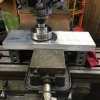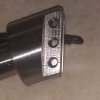Long story short, I had last week off as vacation. That included the past weekend. Went to work today and another RP showed up. Whaaaaaattttt? Hell, when I work the weekend I get the following Tuesday off and that includes weekends I take as vacation. I had today off!
Went back home and decided to make a flycutter. Found a simple set of plans online and went to work. Used a hunk of 1045 just shy of 1.5”. Plans called for 1.5” final diameter but this isn’t that critical.
Did the basic turning, did some figuring, and got it in the mill at a 20° angle. To make sure I milled the groove on the proper side I compared it to my purchased fly cutter. I don’t want a reverse cutting fly cutter!
Other than a cleanup I only need to drill and tap for set screws. I may cold blue it to prevent rust.
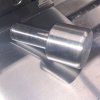
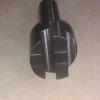
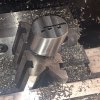
Went back home and decided to make a flycutter. Found a simple set of plans online and went to work. Used a hunk of 1045 just shy of 1.5”. Plans called for 1.5” final diameter but this isn’t that critical.
Did the basic turning, did some figuring, and got it in the mill at a 20° angle. To make sure I milled the groove on the proper side I compared it to my purchased fly cutter. I don’t want a reverse cutting fly cutter!
Other than a cleanup I only need to drill and tap for set screws. I may cold blue it to prevent rust.




